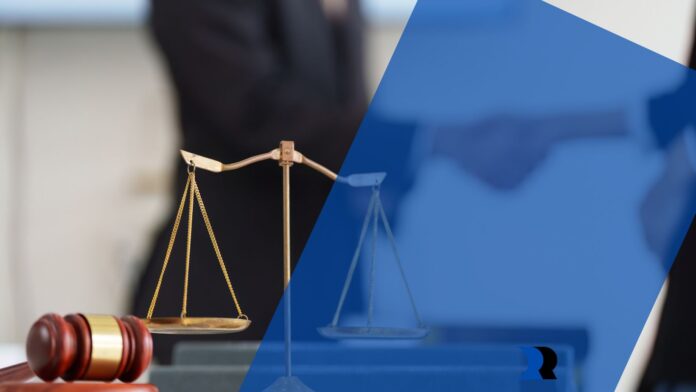The fear of hidden fees keeps many injured people from hiring lawyers. You’re already dealing with medical bills and lost income. The thought of adding attorney fees on top feels overwhelming. You imagine massive bills appearing after the case ends, percentages you didn’t expect, or costs that weren’t explained upfront.
That fear is understandable but it’s often based on assumptions rather than facts. Most personal injury lawyers in Tampa work on contingency, which means transparent fee structures and no surprise bills.
Most PI lawyers work contingency but the details matter enormously. Not all contingency agreements are identical. Some offer better terms than others. Some firms have additional costs beyond the percentage. Some are upfront about everything. Others require reading the fine print to understand what you’re actually paying. Understanding the fee landscape before hiring prevents surprises and helps you evaluate whether an attorney’s terms are fair and competitive.
Getting a transparent cost breakdown for legal help prevents misunderstandings and helps you budget realistically, which means understanding how much does it cost to hire a Tampa personal injury attorney clarifies what you’re actually paying for representation.
The Contingency Model
No fee unless you win is the fundamental promise. You don’t pay upfront. Your attorney covers investigation costs, expert fees, and filing expenses. They’re paid only if your case settles or succeeds at trial. If you lose, you owe nothing. That structure removes the financial barrier that stops most injured people from getting legal help. It also aligns your attorney’s interests with yours because they profit when you do.
Typical percentages and case factors determine your specific fee. Standard contingency percentages range from thirty-three to forty percent. A straightforward rear-end collision with clear liability might be thirty-three percent. A complex case with disputed fault or trial risk might be forty percent. Some firms offer sliding scales where the percentage increases if the case goes to trial. Others maintain consistent percentages regardless of settlement timing. Your attorney should explain their structure upfront.
Why it aligns lawyer and client goals is straightforward. Your attorney wants to maximize your recovery because higher settlements mean higher fees. They’re motivated to negotiate aggressively, pursue full damages, and not settle early for lowball offers. That alignment creates genuine incentive for hard work rather than quick payouts that benefit the firm over you.
Extra Costs to Know
Filing fees, experts, and medical records are necessary expenses beyond the contingency percentage. Court filing fees run hundreds to thousands of dollars depending on the case type. Medical expert testimony to prove injury causation or future impact requires hiring specialists. Accident reconstruction experts might be necessary to prove fault. Medical record retrieval costs money. These expenses add up, and they’re separate from attorney fees.

How these are deducted from settlements matters critically. Some attorneys advance all costs and deduct them from settlement after taking their percentage. Others require you to pay certain costs upfront or separately. The difference affects your net recovery significantly. A fifty-thousand-dollar settlement might be reduced to thirty-five thousand after attorney fees and costs. Knowing this upfront prevents shock at settlement.
Asking for itemized reports means requesting detailed breakdowns of every cost. What were the expert fees? What did medical record retrieval cost? Why was this expert necessary? A good firm provides itemized documentation. Avoid firms that treat costs as black boxes or won’t explain what they spent.
Negotiating Your Fee
Early settlement discounts sometimes happen if your case resolves quickly and favorably. Some attorneys reduce their percentage if settlement occurs before filing a lawsuit or early in discovery. The reasoning is that quick resolution saves the firm time and resources. Asking about discounts for early settlement is reasonable. Some firms will negotiate. Others maintain consistent percentages.
Requesting clear contract terms means getting everything in writing before you sign. The agreement should spell out the percentage, which costs are included and which are separate, what happens if the case doesn’t settle, and your attorney’s responsibility for different fee arrangements. Never agree to contingency terms verbally or vaguely. Get it on paper. Read it carefully. Ask questions about anything unclear.
Signs of fair billing practices include transparent fee discussions before hiring, clear written agreements, itemized statements of costs, regular communication about case expenses, and willingness to answer questions about billing. If an attorney seems evasive about fees or discourages questions, that’s a warning sign.
Value Versus Price
Why a strong lawyer often pays for themselves is that good attorneys negotiate better settlements than inexperienced ones. An attorney experienced in personal injury cases knows local insurance company tactics and what cases typically settle for. They’ll fight harder and smarter than you negotiating alone. Their percentage, while substantial, often means you recover more in total dollars than you would without representation.
Comparing experience to percentage rate means evaluating whether an attorney’s track record justifies their fees. A forty-percent fee from an experienced attorney who wins ninety percent of cases might net you more money than a thirty-percent fee from an inexperienced attorney who settles quickly for lowball offers. The percentage is only part of the equation. Results matter more.
The risk of cheap representation is that inexperienced attorneys might miss issues, undervalue claims, or settle too quickly. You save on fees but leave money on the table. The false economy of hiring based purely on lowest cost often backfires.
Conclusion
Key cost factors include the contingency percentage, additional case costs, any sliding scales or discounts available, and what gets deducted before you’re paid. Understanding these factors prevents surprises and helps you evaluate whether terms are competitive.
Encouraging clarity before signing means asking all your questions and getting written answers. Don’t hire anyone whose fee structure you don’t fully understand. Good attorneys welcome these conversations. Poor ones discourage them.
Understanding transparency on how much does it cost to hire a Tampa personal injury attorney means you can budget realistically and evaluate whether representation is fair and competitive.


